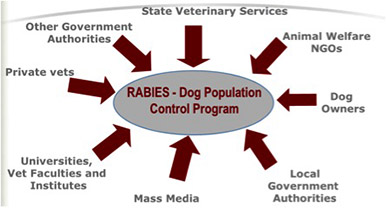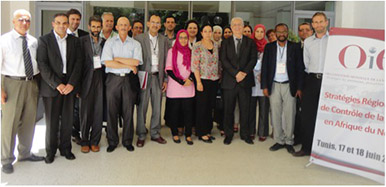
Rabies
Representatives of the medical and veterinary authorities of the countries of North Africa (Mauritania, Morocco, Algeria, Tunisia and Libya) met in Tunis in the framework of the fight against rabies in North Africa. The objective of the meeting was to discuss and validate the political will, community commitment and sufficient financial resources at the regional, national and local levels.
This meeting provided an opportunity to recall the applicable standards of the OIE regarding rabies as well as the recommendations of the OIE Conference in Seoul (September 2011) on the fight against rabies (“Prevention at the animal source is the more sustainable solution”).
Graphic : The actors in the fight against rabies
The experience of countries in the region in the fight against rabies was also presented and discussed. The relevance of the Seoul recommendations? to eradicate this disease has been highlighted, since rabies continues to kill people in the region, mostly children.
The five North African countries are committed to this regional collaboration in duration. Priority actions were identified by the participants for the coming months: development of an OIE twinning on rabies, prospect for a regional vaccine bank, public awareness activities and improvement of national coordination and veterinary governance.
A meeting will be organized by the OIE Sub Regional Representation for North Africa in the medium term to develop the prioritized themes.
Remember !



